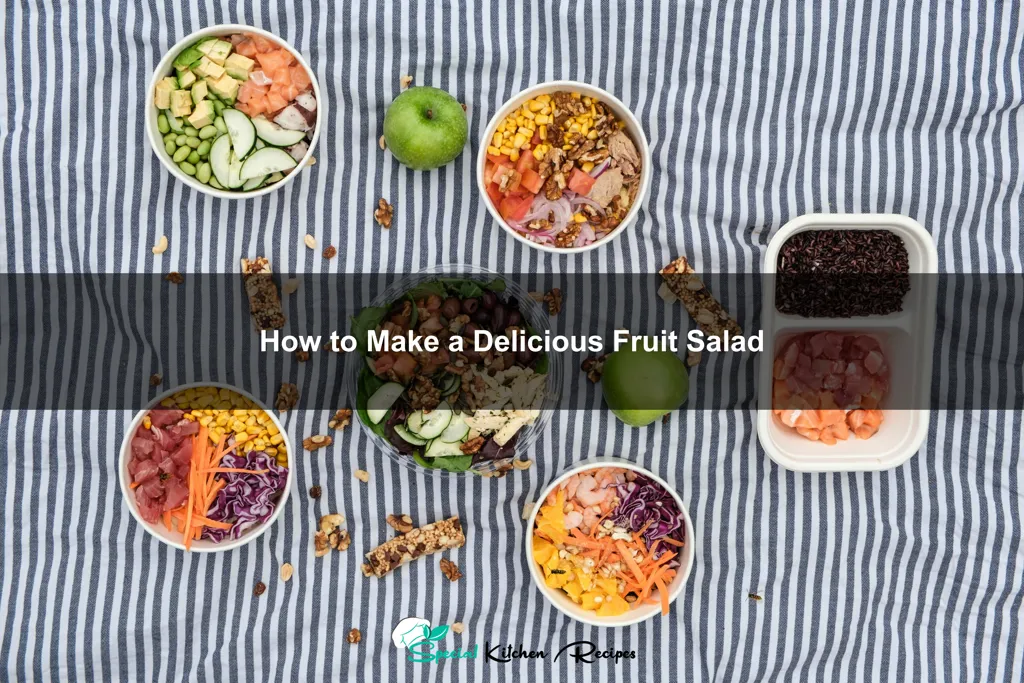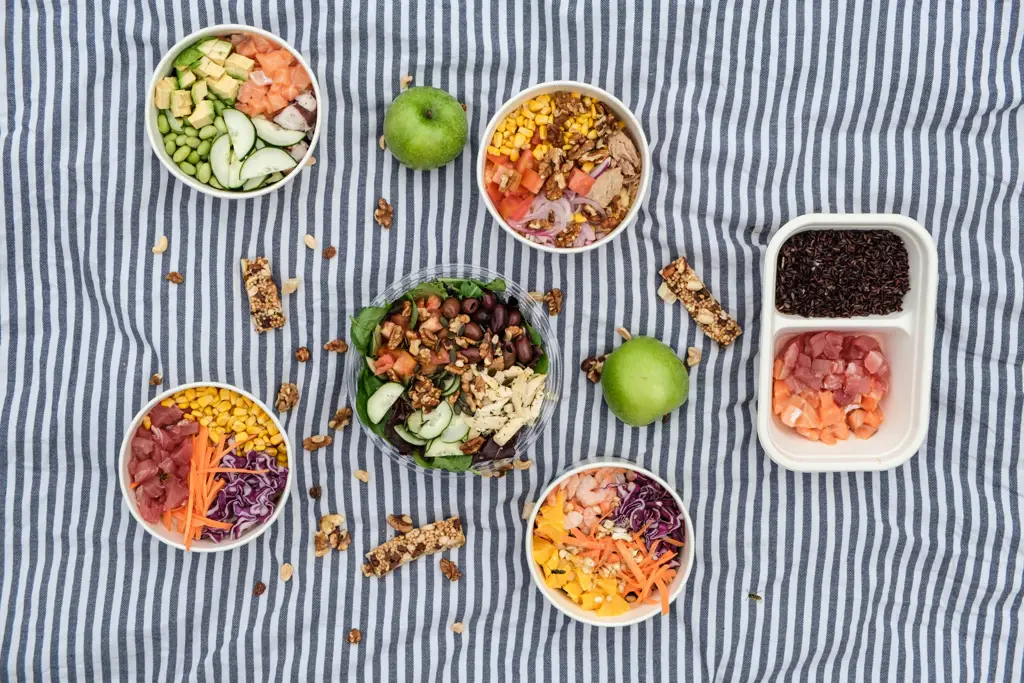The vibrant tapestry of colors and flavors found in a fruit salad is a testament to humanity’s enduring love affair with nature’s bounty. While pinpointing the exact origin of fruit salad is impossible, its history is as rich and diverse as the fruits themselves. Evidence suggests that simple combinations of fruits have been enjoyed since ancient times, with mentions appearing in various historical texts and culinary traditions across the globe. Ancient civilizations likely incorporated seasonal fruits into their diets, creating rudimentary versions of what we now recognize as fruit salad. The concept of a deliberately composed, aesthetically pleasing fruit salad, however, is a more recent development, likely gaining traction in the 18th and 19th centuries with the rise of European exploration and the increased availability of exotic fruits.
Fruit salad’s cultural significance varies widely. In some cultures, it’s a simple refreshment, a light and healthy snack enjoyed daily. In others, it plays a significant role in celebrations and festivals, often adorned with intricate designs and garnishes. For example, in many tropical regions, fruit salads are a staple dessert, reflecting the abundance of locally grown fruits. Statistics show that fruit consumption is globally increasing, driven by greater health awareness and the rising popularity of fruit-based desserts and snacks. This, in turn, has fueled the creativity and innovation surrounding fruit salad recipes, resulting in countless variations based on regional preferences and seasonal availability.
The beauty of a fruit salad lies in its adaptability. There are no strict rules, only guidelines. From classic combinations of apples, bananas, and oranges to more exotic mixtures featuring mangoes, dragon fruit, and star fruit, the possibilities are endless. The key is to balance sweetness, tartness, and texture, ensuring a harmonious blend of flavors and mouthfeel. Interestingly, the color and presentation of a fruit salad are just as important as its taste, with many recipes focusing on creating visually appealing arrangements that tantalize the eyes as much as the palate. This guide will explore how to create a delicious and visually stunning fruit salad, perfect for any occasion.
Ingredients and Measurements
The beauty of a fruit salad lies in its adaptability. You can easily tailor the ingredients to your preferences and what’s in season. However, to achieve a balanced and delicious result, consider the following ingredient suggestions and measurements as a starting point. This recipe serves approximately 4-6 people.
Fruits: The key is variety in both texture and flavor. Aim for a mix of sweet, tart, and slightly acidic fruits. Here’s a suggested combination:
- 2 cups Strawberries: Choose firm, ripe strawberries. Hull them and slice them into halves or quarters, depending on their size. Avoid overripe strawberries as they can become mushy in the salad.
- 1 cup Blueberries: Fresh blueberries are ideal, but frozen (thawed and patted dry) work well too. Their burst of flavor adds a lovely contrast.
- 1 cup Grapes (red and green): Halve larger grapes for easier eating. The combination of red and green grapes provides visual appeal and a slight difference in sweetness.
- 1 Orange (about 1 cup segments): Peel and segment the orange carefully, removing as much pith (the white membrane) as possible. The pith can be bitter.
- 1 Kiwi (about ½ cup, diced): Peel and dice the kiwi into bite-sized pieces. Kiwi tends to oxidize and brown quickly, so add it just before serving, or toss it with a little lemon juice to prevent browning.
- 1 Apple (about 1 cup, diced): Choose a crisp apple like Granny Smith or Honeycrisp. Dice it after removing the core and seeds. To prevent browning, toss the diced apple with a bit of lemon juice.
Optional additions: Feel free to experiment! Consider adding other fruits like raspberries, blackberries, mango (diced), pineapple (diced), or cantaloupe (diced). Remember to adjust the quantities accordingly to maintain a balanced flavor profile. You can also add a small amount of fresh mint leaves (about 1 tablespoon, chopped) for a refreshing touch.
Dressing (optional): While many enjoy the natural sweetness of the fruit, a simple dressing can enhance the flavor. A light honey-lime dressing is a popular choice. You can make one by whisking together 1 tablespoon of honey and the juice of ½ a lime. Avoid using too much dressing, as it can make the fruit soggy.
Important Note: Always wash all fruits thoroughly before using them in your salad. This is crucial for food safety and removing any pesticides or dirt.
Preparation of Fruits (Washing, Peeling, Chopping)
Proper preparation of your fruits is crucial for a delicious and safe fruit salad. Begin by thoroughly washing all your fruits under cold, running water. This removes any dirt, pesticides, or bacteria that may be present on the surface. Scrub firm fruits like melons and apples gently with a clean vegetable brush to remove any stubborn residue.
Next, we’ll move on to peeling. This step depends entirely on the type of fruit you’re using. For fruits like apples, pears, and peaches, you can use a vegetable peeler to efficiently remove the skin. Hold the fruit firmly and peel in a continuous motion, avoiding peeling away too much of the edible flesh. For citrus fruits like oranges and grapefruits, you can use a sharp knife to cut away the peel and pith (the white, bitter part). Remember to remove any seeds.
Some fruits, such as bananas, strawberries, and kiwi, don’t require peeling. Simply wash them thoroughly and proceed to the chopping stage. Always handle fruits with clean hands or utensils to maintain hygiene.
Now, let’s talk about chopping. The size of your fruit pieces will depend on personal preference, but consistency is key for an aesthetically pleasing and evenly textured salad. For a medium-sized fruit salad (serving 4-6 people), consider the following quantities and chopping suggestions:
- Apples (2 medium): Dice into 1/2-inch cubes.
- Bananas (2 medium): Slice into 1/2-inch thick rounds or half-moons.
- Strawberries (1 pint): Hull and slice in half or quarters, depending on size.
- Kiwi (2): Peel and slice into 1/4-inch thick rounds.
- Orange (1 large): Segment and remove any membranes.
Remember to adjust the quantities based on your desired serving size and the types of fruits you select. Use a sharp knife for clean cuts, and always cut away from yourself to prevent accidents. Aim for uniform sizes to ensure even distribution of flavors and textures throughout the salad. If you are using softer fruits like bananas or berries, it’s best to add them just before serving to prevent bruising or discoloration.
Once all your fruits are washed, peeled, and chopped, you are ready to assemble your delicious fruit salad! Proper preparation is the foundation of a great fruit salad, so take your time and pay attention to detail.
Mixing the Salad
The art of mixing a fruit salad lies in achieving a balance of flavors and textures while preventing the fruit from becoming mushy or overly saturated with dressing. This section will guide you through the process, ensuring your fruit salad retains its vibrant colors and fresh taste.
Begin by gently washing and thoroughly drying all your prepared fruits. Thorough drying is crucial to prevent excess moisture from diluting your dressing and making the salad watery. Use a salad spinner or pat the fruit dry with paper towels. Avoid roughly scrubbing the fruit, as this can bruise delicate pieces.
Next, consider the order in which you combine your fruits. Start with the firmer fruits, such as apples, pears, and melon. These hold their shape better and won’t be easily damaged by the addition of softer fruits. Then, add in slightly softer fruits like berries and grapes. Finally, incorporate the most delicate fruits, such as bananas or peaches, just before serving to prevent browning and bruising.
For a 4-serving fruit salad, a good starting point is using approximately 2 cups of firm fruits (e.g., 1 cup diced apples, 1 cup cubed melon), 1.5 cups of medium-firm fruits (e.g., 1 cup berries, ½ cup grapes), and 1 cup of softer fruits (e.g., 1 banana, sliced). Adjust these quantities based on your preferences and the type of fruits you’re using. Remember to consider the size of your serving bowls – you don’t want to overcrowd them.
Once all your fruits are combined, gently toss them together. Avoid vigorous mixing, as this can damage the fruit and release excess juices. Use two spoons or a large spatula to gently lift and fold the fruits, ensuring even distribution. If you’re using a citrus-based dressing, add it just before serving to prevent the fruit from becoming soggy. For other dressings, you can add it earlier, but still, gentle mixing is key.
Finally, consider your serving vessel. A large, shallow bowl is ideal for showcasing the vibrant colors and textures of your fruit salad. If serving immediately, you can garnish with fresh mint leaves or a sprinkle of chopped nuts for added visual appeal and flavor. For best results, serve your fruit salad immediately or within a few hours of preparation to maintain its freshness and optimal texture. Storing it for longer periods can lead to the fruits becoming soft and losing their appeal.
Remember, the key to a successful fruit salad is gentle handling and careful attention to detail. By following these steps, you’ll create a visually stunning and deliciously refreshing fruit salad that’s sure to impress!
Adding Dressing (Optional)
While a simple fruit salad shines on its own, a light dressing can elevate the flavors and textures, adding a delightful complexity. Adding a dressing is entirely optional, but we encourage experimentation to find what complements your fruit choices best. Remember to add the dressing just before serving to prevent the fruit from becoming soggy.
Here are a few dressing options, with suggestions for quantities based on a medium-sized fruit salad (approximately 4-6 servings):
Option 1: Honey-Lime Dressing
This classic combination offers a sweet and tangy balance. Whisk together 2 tablespoons of fresh lime juice, 1 tablespoon of honey, and a pinch of salt. Adjust the honey to your liking depending on the sweetness of your fruit. For a thinner consistency, add a teaspoon of water at a time until you reach your desired viscosity. This dressing works beautifully with tropical fruits like mango, pineapple, and kiwi.
Option 2: Citrus Vinaigrette
For a more vibrant and slightly acidic dressing, try a citrus vinaigrette. Combine 1 tablespoon of orange juice, 1 tablespoon of lemon juice, 1 tablespoon of olive oil, and a small pinch of freshly ground black pepper. Emulsify the dressing gently by whisking until the oil and juices are combined. This dressing is excellent with berries, oranges, and grapefruit.
Option 3: Mint-Yogurt Dressing
A refreshing and slightly creamy option, this dressing provides a cool contrast to sweeter fruits. Combine ¼ cup plain Greek yogurt (full-fat recommended for creaminess), 1 tablespoon of chopped fresh mint, and ½ teaspoon of honey. Taste and adjust the honey as needed. This dressing pairs exceptionally well with watermelon, cantaloupe, and berries. For a thinner consistency you can thin the yogurt with a little milk or lemon juice.
Important Considerations:
Fruit Sensitivity: Some fruits, like apples and bananas, brown quickly when exposed to air. Adding a dressing containing citrus juice can help to slow this process down, but it’s still best to add the dressing just before serving.
Taste Test: Always taste your dressing before adding it to the fruit salad. Adjust the sweetness, acidity, or other seasonings as needed to achieve your desired flavor profile. Start with smaller quantities of dressing and add more gradually until you reach the perfect balance.
Storage: If you have leftover dressing, store it separately in an airtight container in the refrigerator. It can be used for other salads or as a marinade for chicken or fish.
Serving Suggestions
Your vibrant fruit salad is ready, but how you present it can elevate the experience from good to unforgettable. Here are some serving suggestions to make your fruit salad shine.
For a casual gathering, a large, shallow bowl is ideal. Aim for a bowl that’s wide enough to showcase the colorful array of fruits without overcrowding them. A 12-inch diameter bowl is perfect for a salad serving 4-6 people. Consider using a glass or ceramic bowl for visual appeal; the transparency of glass allows the fruit’s colors to pop.
To enhance the presentation, consider layering your fruit salad. Start with the denser fruits at the bottom, such as berries or melon chunks, followed by lighter fruits like grapes or pineapple on top. This creates visual depth and prevents the heavier fruits from sinking to the bottom and becoming soggy. You can also arrange the fruit in a visually pleasing pattern, perhaps separating different types of fruit into sections.
For individual servings, consider using small dessert bowls or even elegant glasses. Approximately 1 cup of fruit salad per person is a generous serving. This allows guests to enjoy a satisfying portion without feeling overwhelmed. Garnish each serving with a sprig of mint or a few edible flowers for an extra touch of elegance.
Temperature matters! Serve your fruit salad chilled for optimal freshness and flavor. Refrigerate the salad for at least 30 minutes before serving, but avoid refrigerating it for too long, as some fruits may become overly soft. For a refreshing twist, consider adding a few ice cubes just before serving, especially on a hot day.
Don’t forget the finishing touches! A light dusting of powdered sugar or a drizzle of honey can add a touch of sweetness and visual appeal. Avoid adding too much sweetener, as the natural sweetness of the fruit should be the star of the show. A sprinkle of chopped nuts, like toasted almonds or pecans, adds a delightful crunch and textural contrast. A squeeze of fresh lime juice just before serving can also brighten the flavors.
Finally, consider the occasion. For a formal event, a more sophisticated presentation is appropriate. For a casual picnic, a simple bowl will do. Adapt your serving style to the context, ensuring the presentation complements the overall atmosphere. No matter how you choose to serve it, your delicious fruit salad is sure to be a hit!
Storage Instructions
Proper storage is crucial for maintaining the freshness and deliciousness of your fruit salad. Improper storage can lead to browning, wilting, and the growth of undesirable bacteria, quickly spoiling your hard work. To ensure your fruit salad remains vibrant and tasty for as long as possible, follow these guidelines carefully.
For immediate consumption (within 2 hours): If you plan to serve your fruit salad immediately, no special storage is required. Simply keep it at room temperature in a large, attractive bowl. However, avoid leaving it at room temperature for more than two hours, especially in warmer climates (above 90°F/32°C), due to the risk of bacterial growth.
For short-term storage (up to 24 hours): For optimal freshness within a day, refrigerate your fruit salad in an airtight container. A glass or food-grade plastic container with a tight-fitting lid is ideal. Ensure the fruit salad is completely cooled before placing it in the refrigerator to prevent condensation, which can lead to sogginess. A 5-quart container should comfortably hold a fruit salad made with approximately 6 cups of chopped fruit.
Adding lemon juice is highly recommended for longer shelf life. The citric acid in lemon juice helps prevent enzymatic browning, which causes fruits like apples and bananas to turn brown. Add approximately 1-2 tablespoons of fresh lemon juice to a 6-cup fruit salad, gently tossing to coat the fruit evenly. This will significantly extend the freshness and prevent discoloration.
For longer storage (beyond 24 hours): While not ideal due to the potential for textural changes, you can extend the shelf life of your fruit salad for up to 2 days by refrigerating it in an airtight container with lemon juice as described above. However, be aware that the texture and flavor of some fruits may begin to deteriorate after 24 hours. It’s best to consume your fruit salad within a day or two for the best quality.
Important Note: Avoid storing your fruit salad with any other food items in the refrigerator to prevent cross-contamination. Always wash your hands thoroughly before handling the fruit salad, and use clean utensils to avoid introducing bacteria.
By following these storage instructions, you can enjoy your delicious fruit salad at its peak flavor and freshness. Remember, freshness is key, so consume your fruit salad as soon as possible for the best experience.
Recommendations for Your Delicious Fruit Salad
For the most vibrant and flavorful fruit salad, choose fruits that are in season. Seasonal fruits are generally cheaper, tastier, and more nutritious. Consider a mix of textures and flavors – combine juicy berries with crisp apples and sweet melon for a delightful experience. Don’t be afraid to experiment with different combinations!
Serving suggestions are endless! A simple fruit salad is delightful on its own as a light dessert or refreshing snack. However, you can also elevate it. Consider serving it with a dollop of Greek yogurt or a scoop of vanilla ice cream for added creaminess and sweetness. A drizzle of honey or a light citrus dressing can also enhance the flavors. For a more sophisticated touch, serve your fruit salad in individual glasses or elegant bowls.
To preserve the freshness and quality of your fruit salad, proper storage is crucial. Store it in an airtight container in the refrigerator. However, avoid refrigerating it for more than 24 hours, as some fruits may become mushy. For longer storage, consider freezing individual fruits before making the salad, then adding them as needed. Remember that the nutritional content may slightly decrease with longer storage.
Fruit salad pairs beautifully with various dishes. It makes a fantastic accompaniment to grilled chicken or fish, adding a refreshing contrast to savory flavors. It also works wonderfully as a side dish to brunch items like pancakes or waffles and even complements light lunch salads.
Nutritional Information (approximate, per serving – varies based on fruit selection): Calories: 150-250, Carbohydrates: 30-50g, Fiber: 5-10g, Vitamins: A, C, and various B vitamins. The exact nutritional content will depend heavily on the specific fruits used. This is just an estimated range.
Important Note: Always wash your fruits thoroughly before preparing the salad to remove any dirt, pesticides, or bacteria. Cut fruits into similar sizes for even distribution of flavors and textures during consumption. Enjoy!





